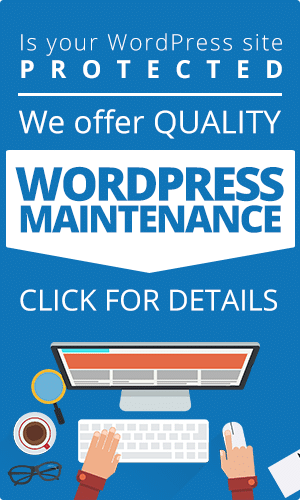Backlinks are an essential aspect of search engine optimization (SEO) that can impact a website’s ranking on search engines. However, not all backlinks are created equal, and spammy links from irrelevant or low-quality websites can have negative effects on a website’s performance. Addressing low quality links requires identifying them and removing them from the website’s backlink profile.
In this article, we will explore the importance of backlinks in SEO and how they relate to off-page SEO. We will also discuss the different types of penalties associated with spammy links and how to identify and remove them.
To understand why identifying and removing spammy links is crucial for optimizing a website’s search engine ranking, it is first necessary to comprehend the role of backlinks in SEO. Backlinks are hyperlinks that direct users from one webpage to another, acting as ‘votes’ for the linked page’s quality and relevance. Search engines use these votes to determine which pages should rank higher than others in response to particular search queries.
Consequently, high-quality backlinks from authoritative websites can improve a site’s visibility on search engines like Google, while low-quality or irrelevant ones may harm its ranking position. This article aims to provide readers with insight into how they can improve their website’s performance by identifying and removing harmful links while building ethical link-building practices.
Key Takeaways
- Spammy backlinks can harm a website’s search engine performance and should be identified and removed.
- There are various types of spammy backlinks, such as those from low-quality websites and those with non-targeted traffic.
- Google penalties for spammy backlinks can be algorithmic or manual, and it is important to regularly check a website’s backlink profile.
- Removing spammy backlinks can be done by requesting their removal or submitting a disavow request to Google, and SEO tools can help make the process easier.
Backlinks and SEO Ranking
The importance of backlinks in SEO ranking has been widely recognized, but it is crucial to understand the potential risks associated with spammy backlinks and how they can negatively impact a website’s performance.
Backlinks are links from other websites that point to your site, and they are considered an essential factor for improving search engine rankings. However, not all backlinks are created equal, and spammy backlinks can harm a website’s reputation in the eyes of search engines like Google.
Spammy backlinks come from low-quality or irrelevant websites that use questionable tactics to manipulate search engine rankings. These links can result in algorithmic penalties or manual penalties from Google, which can significantly affect a site’s organic traffic and visibility.
To avoid these risks, it is important to regularly monitor your website’s backlink profile for spammy links and take necessary actions such as disavowing them or requesting their removal from the linking websites. By doing so, you can maintain a clean and high-quality link profile that positively impacts your site’s SEO ranking.
History of Backlinks and SEO
The evolution of backlinks as a ranking factor in SEO has been marked by the rise and fall of unethical practices, which have prompted search engines to take strict measures to protect the integrity of their algorithms.
In the early days of SEO, website owners abused the power of links, leading to the birth of ‘link farms’ and other ‘black hat’ backlink building practices. This resulted in websites with irrelevant or low-quality content ranking higher than those with high-quality content but fewer backlinks.
In response, Google introduced its Penguin Update in 2012 to put an end to spammy backlink practices.
Today, search engines like Google use complex algorithms that evaluate various factors when determining a website’s ranking, including the quality and relevance of its content and the number and quality of external links pointing to it.
As such, it is crucial for website owners to ensure that their sites only have high-quality backlinks from reputable sources to improve their chances of appearing at the top of Google search results.
Google’s Penguin Update
Google’s Penguin Update of 2012 was rolled out to discourage the use of spammy backlink practices and restore integrity to the world of SEO.
The update aimed to identify websites that were participating in manipulative link building practices and penalize them accordingly. In doing so, they created a system that rewarded quality content and legitimate links.
The Penguin algorithm targeted spammy backlinks by devaluing their impact on a website’s search engine ranking. Websites with spammy backlinks in their backlink profile would see a drop in rankings or be penalized altogether.
To avoid penalties, website owners needed to disavow backlinks from low-quality websites or request that those websites remove the links altogether.
The Penguin update marked a significant turning point for SEO as it signaled the end of black hat link building practices and emphasized the importance of quality content creation and ethical link building strategies.
Types of Google’s Link-Related Penalties
Google’s link-related penalties come in two forms: manual penalty and algorithmic penalty, both of which can significantly impact a website’s search engine ranking.
Manual penalties are initiated after a manual review of the backlink profile by someone in Google’s webspam team. This type of penalty is more severe than an algorithmic penalty and requires the website owner to take specific actions to fix the issue before submitting their site for reconsideration.
On the other hand, algorithmic penalties are triggered automatically by Google’s Penguin link filter. These types of penalties usually occur due to spammy links pointing to your site from low-quality websites or link building practices that violate Google’s guidelines.
To avoid being penalized, it is essential to regularly monitor your website’s backlink profile using SEO tools like Google Search Console or third-party services like Ahrefs and SEMrush. If you identify spammy links pointing to your site, there are several steps you can take to remove them.
First, contact the website owner/manager directly and request they remove the link. If this fails, try reaching out to the hosting company or submit a disavow request through Google Search Console’s disavow tool. Removing spammy links may be time-consuming but is necessary for maintaining a healthy backlink profile and avoiding potential penalties from search engines like Google.
Remove or Disavow Residual Spammy Backlinks
Residual spammy backlinks can persist on websites that were active before the implementation of Google’s Penguin update and pose a risk to a website’s search engine performance. These links may have been built using tactics that are now considered as ‘black hat’ SEO practices such as link farms, blog networks, article websites, and single post blogs. Websites with residual spammy backlinks are likely to be associated with negative ranking signals and could result in receiving penalties from Google.
To detect residual spammy backlinks on a website, webmasters need to conduct regular audits of their site’s backlink profile. Auditing tools like RankWatch can help identify any suspicious links pointing towards the website. Once identified, removing these links can be achieved through various methods like requesting the website owner or hosting company to remove them, submitting disavow requests to Google or simply reaching out to webmasters directly asking for removal.
It is important for webmasters to take steps in detecting and removing low-quality links as they can have a negative impact on a website’s overall search engine performance.
Types of spammy links to watch for:
- Link farms
- Blog networks
- Article websites
- Single post blogs
Monitoring and removing spammy links:
- Conduct regular audits of the site’s backlink profile.
- Use auditing tools like RankWatch.
- Request removal by contacting website owners or hosting companies.
- Submit disavow requests to Google.
Avoiding Low-Quality Websites for Guest Posting
Moving on from the previous subtopic of residual spammy backlinks, it is essential to discuss how to avoid low-quality websites for guest posting. Guest posting is a legitimate and effective way of building quality backlinks, but it can be risky if not done correctly.
One common mistake is guest posting on low-quality websites that may result in creating spam links leading to penalties. When selecting websites for guest posting, website owners must pay attention to the website’s quality and relevance.
Low-quality websites often have poor domain authority, originate from foreign countries that are not targeted, use anchor text excessively or unnaturally, and have an abundance of ads. Such websites are likely to be penalized by search engines like Google for spamming practices.
Thus, guest posting on such sites should be avoided at all costs to prevent harm to your website’s search engine performance caused by bad backlinks.
Risks of Paid Links and Link Exchanges
Purchasing links or exchanging links with other websites can pose significant risks to a website’s search engine performance. These practices fall under the category of unnatural link building and are often used in an attempt to manipulate search engine rankings artificially. Google’s algorithms are designed to detect such activities, and websites that engage in these practices may face severe penalties, including loss of ranking positions, reduced visibility, and even complete removal from search results.
One of the most common risks associated with paid links is negative SEO. Negative SEO refers to the practice of intentionally harming a competitor’s website by creating spammy backlinks pointing towards it. This tactic can be used by unscrupulous individuals or businesses looking to undercut their competition unfairly.
Websites that purchase links or engage in link exchanges expose themselves to this risk since they essentially become vulnerable targets for negative SEO attacks. As such, it is always advisable for websites to focus on natural link building techniques rather than resorting to risky tactics that could harm their online reputation in the long run.
Directory and Forum Spam
Directory and forum spam can harm a website’s search engine performance by creating low-quality backlinks, which may be associated with spammy content or irrelevant websites.
The practice of directory spam involves listing a website on as many directories as possible, regardless of the quality or relevance of the directory to the website’s niche.
Forum spamming, on the other hand, involves posting links in comments or forums that are not related to the topic being discussed.
Both practices aim to generate backlinks quickly and easily but can ultimately harm a website’s organic traffic.
To detect directory and forum link spam, it is important to conduct regular audits of a website’s backlink profile using tools such as RankWatch.
A low Domain Rating (DR) score for a linking domain is an indicator of poor quality and should signal further investigation into the nature of those links.
Additionally, anchors that appear repeatedly across multiple domains are another red flag for potential link spam.
Removing these types of links will help improve a website’s search engine performance over time.
Effective Guest Posting
When implemented correctly, guest posting can be an effective strategy for acquiring high-quality backlinks and enhancing a website’s authority in its niche. Guest posting involves creating valuable content on another website while including a link to your own website in the author bio or within the article itself. However, there are certain guidelines that should be followed to ensure that guest posting is done ethically and effectively.
- Choose high authority websites: Look for websites that have a high domain rating (DR) score and are relevant to your niche. This ensures that you get quality links from credible sources.
- Avoid low-quality websites: Stay away from low-quality blogs or those with a history of link spamming. These types of websites could harm your website’s ranking instead of improving it.
- Use branded anchors: Instead of using exact match keywords as anchor text, use branded anchors such as the name of your business or website URL to avoid being penalized by search engines.
- Regularly audit backlinks: Conducting regular audits of backlinks is essential to identifying any spammy links that may arise from guest posting or other practices. As a webmaster, it is important to stay vigilant and take action when necessary to maintain the integrity of your website’s ranking in search engine results pages (SERPs).
Outbound Links and Ethical SEO
Outbound links play a crucial role in ethical SEO by not only improving user experience but also building relationships with high authority websites.
Including outbound links on your website can demonstrate to search engines that you are providing valuable resources and information to your audience. When placed correctly, these links can help establish trust and credibility with other websites in your industry.
However, it is important to be cautious when placing outbound links as they can also harm your website’s reputation if they lead to spammy or low-quality websites. Search engines may devalue or penalize your website for linking to such sites.
Therefore, it is essential to conduct regular audits of your outbound links and ensure that they are relevant, reputable, and provide value to the user.
By following ethical SEO practices regarding outbound links, you can improve your website’s search engine performance while maintaining a positive online presence.
Frequently Asked Questions
How do you know if a backlink is spammy or not?
The quality of a backlink can be determined by assessing its anchor text, the domain rating score of the linking website, and whether it originates from a foreign or unrelated niche website. Traffic spikes from non-targeted countries may also indicate spammy links.
Can you request a website owner to remove a backlink from their website?
Yes, website owners can be requested to remove a backlink from their website. This is one of the alternatives to disavowing links and involves contacting the owner/manager or hosting company directly. Regularly checking for spammy backlinks is recommended.
What is the best way to remove a spammy backlink?
The best way to remove a spammy backlink is to request the website owner/manager or hosting company to remove it. If that fails, submitting a disavow request to Google may be necessary. Regularly checking for and removing spammy backlinks is crucial for maintaining search engine performance.
Are outbound links important for SEO?
Outbound links are an important aspect of ethical SEO and can contribute to a website’s authority and credibility. Google expects websites to have outbound links, but they should be carefully chosen to avoid spammy or non-niche related websites. Affiliate links should also be associated with a ‘no-follow’ attribute.
How can you improve your website’s search engine performance?
Improving website search engine performance requires a multi-faceted approach, including creating high-quality content and optimizing on-page elements. Building organic backlinks from authoritative websites can also enhance search visibility by boosting domain authority, similar to how adding quality ingredients enhances the flavor of a recipe.
Conclusion
Backlinks are a crucial element of SEO, but not all backlinks are created equal. The history of backlinks and SEO has been tumultuous, with Google’s Penguin Update marking a significant turning point in how search engines approach link building. Spammy backlinks from low-quality or irrelevant websites can harm your website’s search engine performance, leading to penalties that can be difficult to recover from.
Identifying and removing spammy links is vital for optimizing your website’s search engine ranking and ensuring its long-term success. This article has explored the different types of penalties associated with spammy backlinks and provided practical advice on how to identify and remove them. We have also discussed best practices for ethical link building, including effective guest posting and outbound linking.
In conclusion, while the risks associated with spammy backlinks are real, there are many ways to ensure that your website’s link profile is clean and optimized for search engine results. By following best practices for ethical link building and remaining vigilant about identifying and removing any residual spammy backlinks, you can help ensure the long-term success of your website.
With dedication and attention to detail, you can take control of your website’s off-page SEO strategy today.






